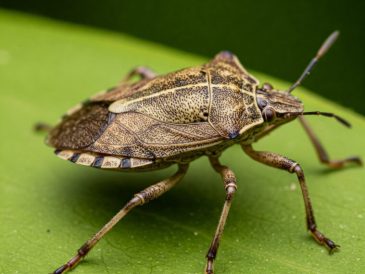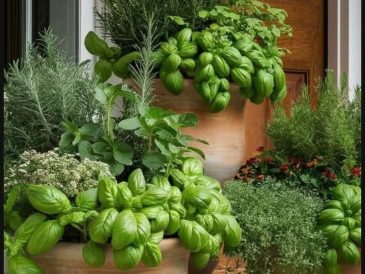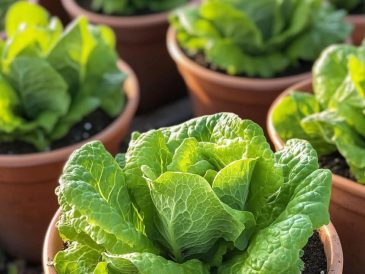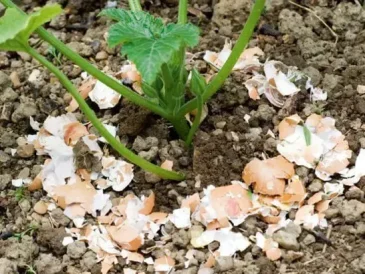How to Make a Homemade Insecticide to Eliminate Pests from Your Plants
If you’re dealing with pests like aphids, mealybugs, whiteflies, caterpillars, and more, you don’t have to resort to harsh chemicals. There’s a simple and effective way to protect your plants using ingredients you likely already have at home. This homemade insecticide will help eliminate pests and prevent future infestations, keeping your plants healthy and thriving.
Why You Need to Act Quickly Against Pests
It’s common for plants to get infested with pests from time to time. However, acting quickly when you spot these issues is crucial. Left unchecked, pests can cause serious damage to your plants, stunting their growth or even killing them. This homemade insecticide offers a safe, effective way to take care of pest problems without harming your plants or the environment.
Ingredients for the Homemade Insecticide
To make this super insecticide, you will need just a few ingredients, all of which are readily available in most households:
-
- Water (1 liter)
- Baking soda (1 tablespoon)
- Dish soap (1 tablespoon of neutral dish soap)
- Vinegar (1 tablespoon, preferably white vinegar or apple cider vinegar)
These ingredients work together to kill pests on contact and prevent future infestations. Baking soda helps disrupt pests’ bodies, while dish soap breaks down their protective layers. Vinegar adds to the solution’s effectiveness, especially in preventing fungal growth.
Step-by-Step Instructions for Making the Insecticide
-
- Prepare the Solution
Start by mixing 1 liter of water in a container. Add 1 tablespoon of baking soda to the water and stir until it’s completely dissolved. This will help the solution stick to the plants. - Add Dish Soap
Add 1 tablespoon of neutral dish soap to the solution. The dish soap acts as an emulsifier, helping the solution adhere to the plant’s surface and ensuring it covers the pests effectively. - Add Vinegar
Next, add 1 tablespoon of vinegar. Vinegar helps to disrupt pests’ ability to survive and also prevents fungal growth that might contribute to pest problems. - Mix Thoroughly
Stir all the ingredients well until they are fully combined into a smooth solution. Now your homemade insecticide is ready for use!
- Prepare the Solution
How to Apply the Insecticide
Now that your insecticide is ready, it’s time to apply it to your plants. You’ll need a spray bottle or any type of sprayer to apply the solution. Here’s how to do it properly:
-
- Target the Infested Areas
Spray the insecticide directly on the affected areas of the plant, especially on the underside of the leaves where pests like to hide. Be thorough and ensure that the solution covers the entire plant, including all stems and leaves. - Spray in the Morning or Evening
For best results, apply the insecticide either early in the morning or late in the afternoon. This helps avoid applying the solution when the sun is at its peak, which can cause the solution to evaporate too quickly or damage the plant. - Repeat the Process
It’s recommended to apply the solution every 3 to 4 days for at least two weeks. This regular application ensures that you eliminate both adult pests and their eggs. After two weeks, you should see a significant reduction in pests, and your plants will be healthier as a result. - Check for Pests RegularlyContinue to inspect your plants for signs of pests. If you notice any new infestations, apply the solution again. The solution not only kills pests but also prevents new pests from attacking your plants.
- Target the Infested Areas
Additional Tips for Pest Prevention
While this homemade insecticide is a powerful tool, there are other ways to protect your plants and reduce the chances of pest infestations in the future:
-
- Companion Planting
Consider planting complementary species together. For example, planting tomatoes with onions or peppers can help deter certain pests. The strong scents of these companion plants often act as natural repellents, keeping pests away from your garden. - Maintain Healthy Soil
Healthy soil is essential for keeping plants strong and resilient against pests. Regularly add organic matter or compost to your garden beds to ensure your plants are getting the nutrients they need to stay healthy. - Encourage Beneficial Insects
Certain insects, such as ladybugs and predatory beetles, feed on pests like aphids. Encourage these beneficial insects by planting flowers and herbs that attract them, like dill, fennel, and marigolds. - Rotate PlantsCrop rotation helps prevent pests from becoming too familiar with a particular plant. By moving plants around in your garden each season, you make it harder for pests to establish themselves.
- Companion Planting
Conclusion
Using a homemade insecticide made from simple household ingredients is an effective and environmentally friendly way to manage pest problems in your garden. This solution can eliminate a wide range of pests, including aphids, mealybugs, whiteflies, and caterpillars. By applying it regularly, you’ll help ensure that your plants stay healthy, vibrant, and productive.
In addition to using this insecticide, remember that maintaining healthy soil, planting companion plants, and encouraging beneficial insects are all part of a comprehensive approach to pest management.





